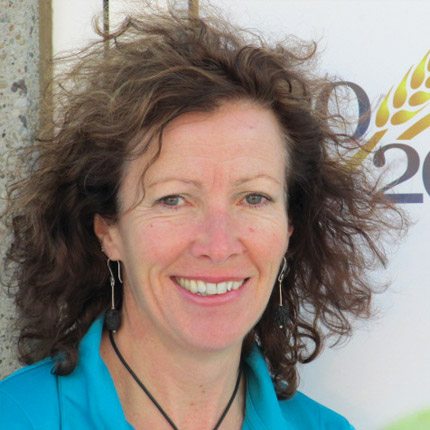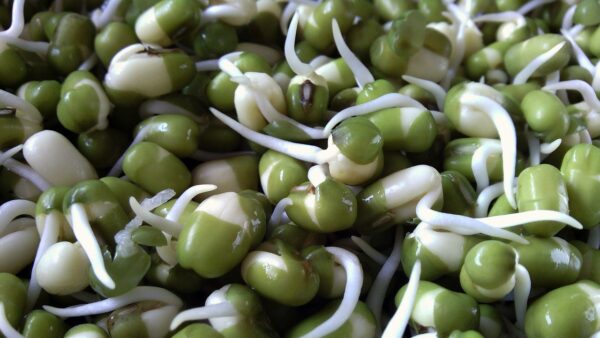Like many discoveries, seed treatments got their start by accident. In the 1600s, a boat full of grain sank off the coast of England. While the wheat recovered was unfit for milling, some local farmers tried planting it. The seawater-soaked seed produced a crop mostly free of smut, while unsoaked seed produced crops with heavy smut infestations. Thus began the quest for the holy grail of seed treatments._x000D_
_x000D_
For the next two centuries, farmers, botanists and scientists worked with a range of products to control cereal crop diseases. Starting with products such as salt, lye, saltpeter, lime and urine, compounds progressed to copper sulfate, formaldehyde and organic mercury. By the early 1900s, research favoured copper carbonate, methylmercury and ethylmethylmercury, with commercial products developed and registered in Sweden, the United States and Australia._x000D_
_x000D_
Most of these early products controlled pathogens on the seeds’ surface, but would not penetrate the inner workings. In the 1970s, concern about mercury toxicity spelled the end of those treatments. This aligned with the discovery and development of systemic products such as carboxin, providing control for smut. Combined with the fungicide thiram, this seed treatment came to market as Vitavax 200._x000D_
_x000D_
_x000D_
Graham Hastie, Bayer SeedGrowth portfolio manager for cereals, says the early oil-based products were hard to apply and sensitive to temperature._x000D_
_x000D_
“Since then, we’ve moved to more water-based products, which are easier to clean, flow better and cover the seed more effectively,” Hastie says._x000D_
_x000D_
Changing Farm Practices_x000D_
_x000D_
During the past two decades, farmers shifted to direct seeding and continuous cropping, which increased the amount of crop residue left in fields._x000D_
_x000D_
“With summerfallow, there wasn’t much inoculum left from the previous crop, but continuous cropping allowed the fungus to survive from year to year, and we saw a buildup of more fusarium in the soil,” says Ted Labun, Syngenta Seedcare technical lead._x000D_
_x000D_
Additionally, farmers were seeding earlier. “With the earlier seeding, we saw more Pythium issues resulting in seed decay and root rot,” Labun says. “This impacted pre- and post-emergence damping off plus seed decay, and the new active ingredients being screened for these diseases were very specific and very good.”_x000D_
_x000D_
Seed treatment fungicides controlled a variety of bunts, root rots, smut and seed decay, among others._x000D_
_x000D_
The original systemic fungicide, carboxin, inhibited mitochondrial function. The next generation products (thiram, maneb, mancozeb, PCNB and captan) disrupted enzymes crucial for cell metabolism._x000D_
_x000D_
Today’s products have more specific modes of action. Thiabendazole stops nuclear division. Metalaxyl inhibits RNA synthesis. And the newest compounds such as tebuconazole, difenoconazole and triadimenol inhibit sterol biosynthesis. These are effective at low doses, systemic in plants and control a variety of fungal pathogens._x000D_
_x000D_
_x000D_
Labun says the active ingredients developed in the past five years target specific diseases. “We just launched Vibrance, which is good on Rhizoctonia,” he says. “But all the new chemistries provide consistent performance, uniform stand establishment and prevent seed decay.”_x000D_
_x000D_
Hastie adds that the products out today offer contact and systemic modes of action, which are important. Both Bayer and Syngenta have contact fungicides effective on fusarium._x000D_
_x000D_
“They’re both comparable in activity; it’s just the formulation to get them on the seed that differentiates them,” Hastie explains._x000D_
_x000D_
A big part of the seed treatment evolution has been improving product application. Years ago, growers may have been getting the correct volume on, but the coverage wasn’t there._x000D_
_x000D_
“On-farm treating has improved, making a difference on the performance and return on investment for growers,” Labun says. “When we treated in the early days, secondary mixing was a huge requirement. Today, we see much better primary application, so distribution on each individual seed has improved dramatically.”_x000D_
_x000D_
Labun says by atomizing the seed treatment with a pressurized system, such as a nozzle or a spinning disk, coverage is improved. Batch treaters also ensure proper application rates._x000D_
_x000D_
_x000D_
When it comes to storage, Sarah Foster, president of 20/20 Seed Labs, says seed storage trials show no issue with storing treated cereal seed for one year, as long as you confirm germination rates with a test before seeding._x000D_
_x000D_
Seed labs have been an independent voice in the seed treatment business for many years. Foster says her lab has worked with the major manufacturers since the mid-1990s._x000D_
_x000D_
“The initial work 20/20 did with Syngenta dealt with carrying over treated seed and the effect on germination,” Foster says. “Work moved to root rots in barley and more recently the effectiveness of seed treatment control of the various fusarium pathogens.”_x000D_
_x000D_
From the initial fungicide tests, Foster says her lab developed a fungal screen test. “We can look at all the pathogens (saprophytic, parasitic and storage fungi) that affect cereals and the development of seed without a seed treatment,” she says. “If one or several are present and the appropriate seed treatment is not applied, emergence could be compromised._x000D_
_x000D_
“We started doing this as prescriptive testing. We identify the issues present, the producer gets a prescription for products on the market that would be effective, and then they choose which ones to use.”_x000D_
_x000D_
Foster’s lab identifies which pathogens would affect economic performance; however, if a certain level of contamination is reached, they recommend not using the seed at all._x000D_
_x000D_
Today, “biologicals” is the buzz word. “All the companies are looking at biologicals to see how they affect crops from a plant health standpoint and improved disease control,” Hastie says. “They show promise in facilitating disease control and may help prevent resistance to some active ingredients.”_x000D_
_x000D_
But Hastie says biologicals are no silver bullet. “From my experience, biologicals can’t manage disease to the levels we’re use to, so they’ll be used alongside traditional chemistries.”_x000D_
_x000D_
Kip Workman, Stoller Enterprises Canadian technical product manager, works with biological seed treatments._x000D_
_x000D_
“Our products are designed to mitigate seedling stress that can occur within the first six weeks of seeding,”_x000D_
Workman says. “When a plant is stressed, there’s a hormonal imbalance. Our treatments regulate these growth hormones and to tell the plant it’s not under stress and to continue growing.”_x000D_
_x000D_
Whether you’re using a traditional chemistry or at the forefront with biologicals, the benefits seed treatments deliver to cereal farmers is a great success story. A variety of chemistries are used so resistance is less of an issue, the fungicides used generally have low toxicity to plants and animals, plus they are applied in low doses so have little environmental impact. Bill Strautman













